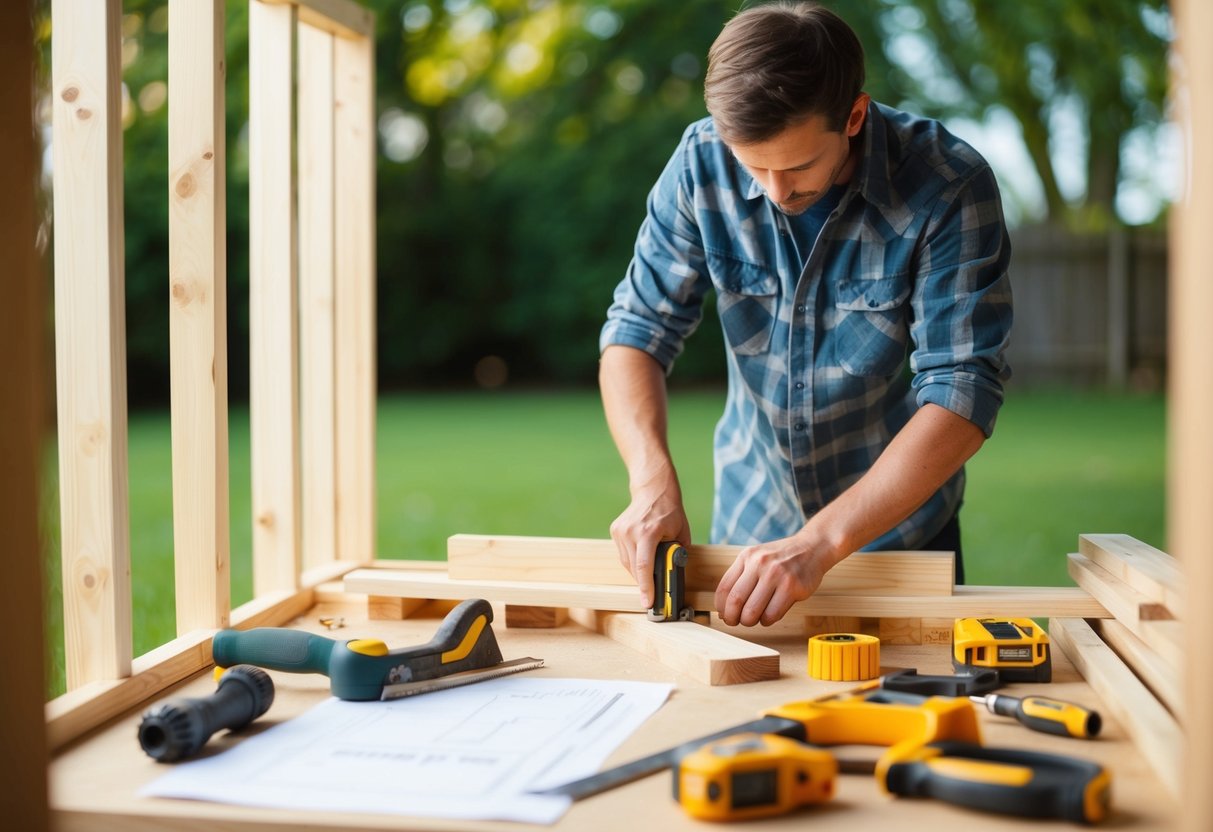Building a Backyard Shed: Essential Tools and Plans for DIY Enthusiasts
Planning for Size and Storage
Effective planning requires a comprehensive understanding of space needs and available yard area. It is important to consider not only current storage items but also future acquisitions. Small storage shed plans may suffice for gardening tools, but larger equipment requires more extensive designs.
Deciding on the shed’s square footage involves balancing yard space with functional needs. Always measure thoroughly, and account for door and window placement. Home shed plans often incorporate additional lofts or shelving for vertical storage opportunities. Make sure storage solutions are practical and efficiently utilize all available space.
Acquiring Building Permits

Before beginning construction on a backyard shed, obtaining the necessary building permits is crucial. Local regulations often require permits for new structures, even small ones like sheds. Homeowners should check with the local building department to understand specific requirements and avoid potential legal issues.
The process of acquiring permits usually involves submitting a set of building plans for review. These plans need to detail the materials, dimensions, and placement of the shed. The accuracy of these plans is vital to ensure approval. Proper documentation speeds up the process and helps prevent delays.
Building departments may impose certain restrictions based on property zoning laws and safety regulations. These might include setback distances from property lines or height restrictions to ensure the shed does not interfere with utility lines. Being aware of such guidelines is essential for a smooth permitting process.
Once the plans are reviewed, the local building department will either approve or request modifications. If approved, the shed construction can begin, but it’s important to adhere strictly to the approved plans. Deviating from them might result in additional inspections or penalties.
Starting construction without permits may lead to fines or even legal action. It can also complicate future property sales or renovations. Thus, securing the necessary permits not only ensures compliance but also provides peace of mind for those looking to build a backyard shed.
Tools and Materials Required
Creating a backyard shed involves gathering essential tools and materials to ensure construction runs smoothly. From foundational tools like saws and drills to materials like plywood and roofing shingles, each item plays a critical role.
Essential Tools for Construction
To begin construction, a set of fundamental tools is necessary. A tape measure is crucial for ensuring precise dimensions of wall studs and roof framing. Power tools such as a circular saw and a cordless drill speed up construction and make it more convenient to cut and assemble materials. For accurate framing, a level ensures that floor and wall studs are even. Safety gear including gloves and goggles is essential to protect the builder during the process. A hammer and a set of screwdrivers are used for nailing and adjusting components that might require manual intervention. Additionally, a square tool ensures right angles for constructing a sturdy framework.
Materials Checklist
The primary materials needed include shed kits that come with pre-cut wood and instructions, significantly easing the construction process. For those building from scratch, wall studs form the core structure, available in various dimensions. Plywood is often used for the walls and floors due to its durability and ease of handling. Roofing materials such as shingles or metal sheets provide weather resistance. Nails, screws, and brackets are necessary for joining all parts of the shed securely. Paint or wood stain may also be considered for finishing, offering aesthetic appeal and protection against the elements. Concrete mix could be needed if creating a foundation. Each material serves a specific function, ensuring the shed is robust and long-lasting.



